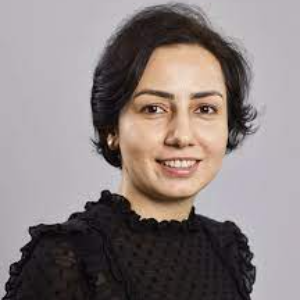Title : Catalytic pyrolysis of waste electrical and electronic equipment plastics for chemical recycling
Abstract:
Waste electrical and electronic equipment (WEEE) constitutes one of the fastest growing waste streams globally. In Europe, almost 10 kg per capita of WEEE has been collected during 2019 and more specifically, Sweden, where this study performed, the amount collected is even higher than the average of EU, 15.1 kg/capita. This massive amount of waste cannot be excluded from the circular society that we all trying to create, therefore recovering of WEEE materials constitutes a major priority. The most common waste management techniques for WEEE materials include a series of physical separation steps such as manual detoxification by removing toxic components, then shredding, sorting, and compounding which increases the recovery of metals and flame retardants from plastic components. At the end of these processes, several plastic materials are extracted, which are difficult to be further processed by mechanical means, and therefore thermochemical recycling is needed for increasing their material recovery. As a final step, the recovery of energy is proposed since no more material recovery can be achieved with the current available technology. For instance, in Sweden, Boliden Mineral AB is operating a facility located at Boliden Rönnskär focusing on the recovery of metals from these WEEE fractions but with a limited recovery of other substances. This study aimed to improve the recycling of WEEE fractions into monoaromatic hydrocarbons and metal residues using an efficient pyrolysis system. Non-catalytic and catalytic pyrolysis of WEEE fractions were performed using a bench-scale batch pyrolyzer equipped with a fixed-bed catalytic reactor. The materials used as feedstock were real waste fractions with different copper contents processed by Boliden Mineral AB, in Sweden, to recover copper. This research studied the feasibility of thermochemical recycling of the WEEE plastics via a pyrolysis process in parallel with copper recovery. Indeed, a pyrolysis system with an efficient recycling of chemicals from WEEE can add value to the copper metal recycling process which is currently performed by Boliden Mineral AB. The pyrolysis was followed by catalytic upgrading to recover metals in solid products and monoaromatic hydrocarbons in liquid products. Metal residues from pyrolysis process can be recycled for relevant industrial applications. Besides the application of monoaromatic hydrocarbons as fuels/additives, they can be used as building blocks in chemical production industry, enhancing the resource efficiency of the metal recovery industries. Hence, the pyrolysis tests were carried out at 500 °C followed by ex-situ catalytic upgrading at 450 °C. HZSM-5 was used as catalyst with the feedstock to catalyst ratio of 10/1 w/w. The hydrocarbon mixture of benzene, toluene, and xylenes (BTX) was considered as the target product to evaluate the process performance. The experimental results indicated that the HZSM-5 catalyst was suitable for selective production of BTX and other monoaromatic hydrocarbons from the WEEE fractions tested.
Audience Take Away:
- Circular economy concept in the management of waste electrical and electronic equipment (WEEE) fractions
- Role of zeolite catalyst in the conversion of wax pyrolyzates of WEEE into high-value chemicals of BTX
- Efficiency of a bench-scale batch pyrolyzer equipped with a fixed-bed catalytic reactor in chemical recycling from WEEE



